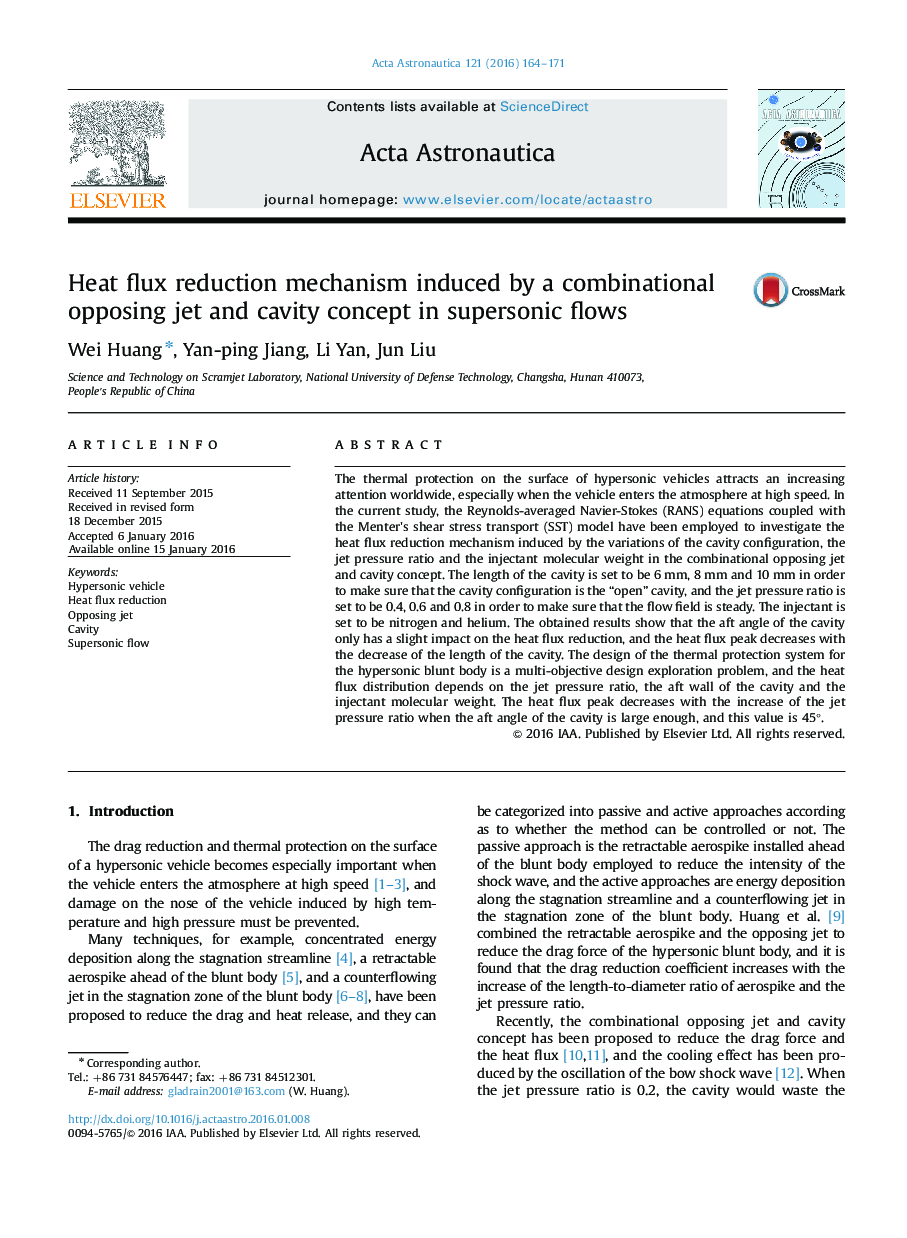| Article ID | Journal | Published Year | Pages | File Type |
|---|---|---|---|---|
| 1714226 | Acta Astronautica | 2016 | 8 Pages |
•Heat flux reduction induced by parametrical variations was investigated.•Heat flux peak decreases with decrease of the length of cavity.•Design of thermal protection system is a multi-objective design exploration problem.•Heat flux peak decreases with increase of the jet pressure ratio.
The thermal protection on the surface of hypersonic vehicles attracts an increasing attention worldwide, especially when the vehicle enters the atmosphere at high speed. In the current study, the Reynolds-averaged Navier-Stokes (RANS) equations coupled with the Menter׳s shear stress transport (SST) model have been employed to investigate the heat flux reduction mechanism induced by the variations of the cavity configuration, the jet pressure ratio and the injectant molecular weight in the combinational opposing jet and cavity concept. The length of the cavity is set to be 6 mm, 8 mm and 10 mm in order to make sure that the cavity configuration is the “open” cavity, and the jet pressure ratio is set to be 0.4, 0.6 and 0.8 in order to make sure that the flow field is steady. The injectant is set to be nitrogen and helium. The obtained results show that the aft angle of the cavity only has a slight impact on the heat flux reduction, and the heat flux peak decreases with the decrease of the length of the cavity. The design of the thermal protection system for the hypersonic blunt body is a multi-objective design exploration problem, and the heat flux distribution depends on the jet pressure ratio, the aft wall of the cavity and the injectant molecular weight. The heat flux peak decreases with the increase of the jet pressure ratio when the aft angle of the cavity is large enough, and this value is 45°.
